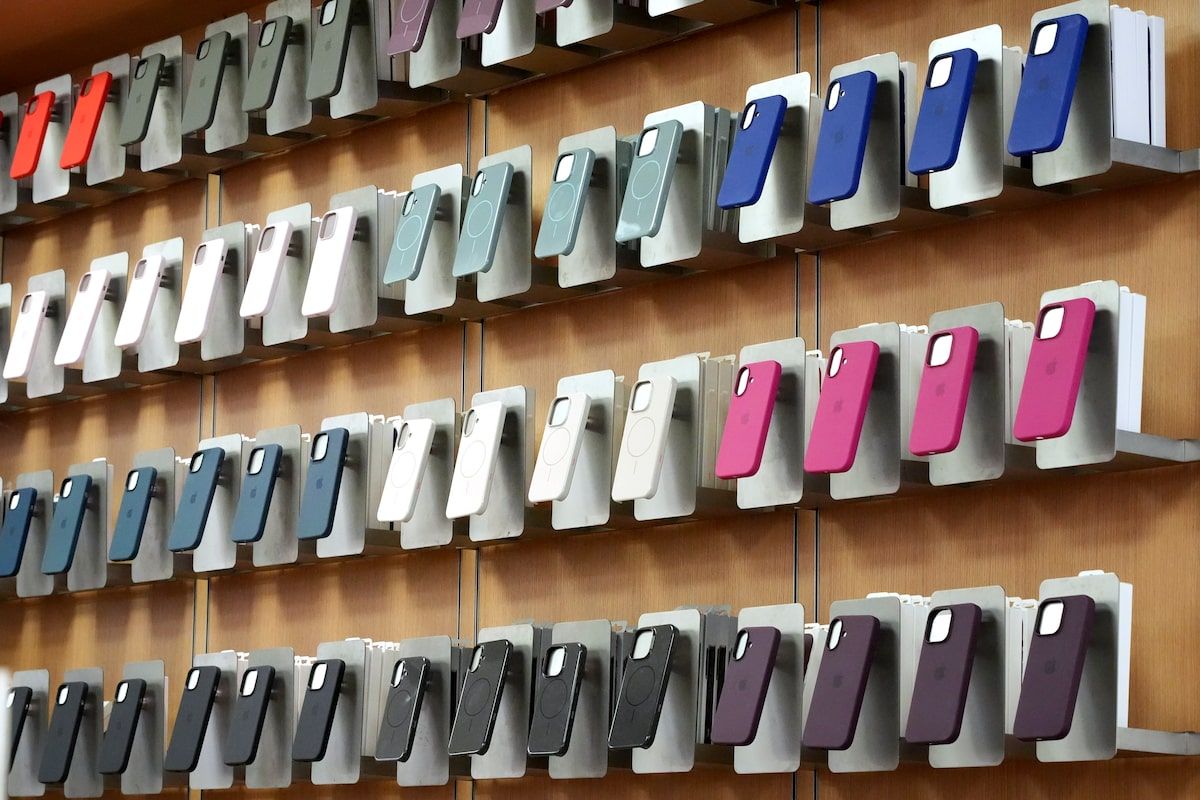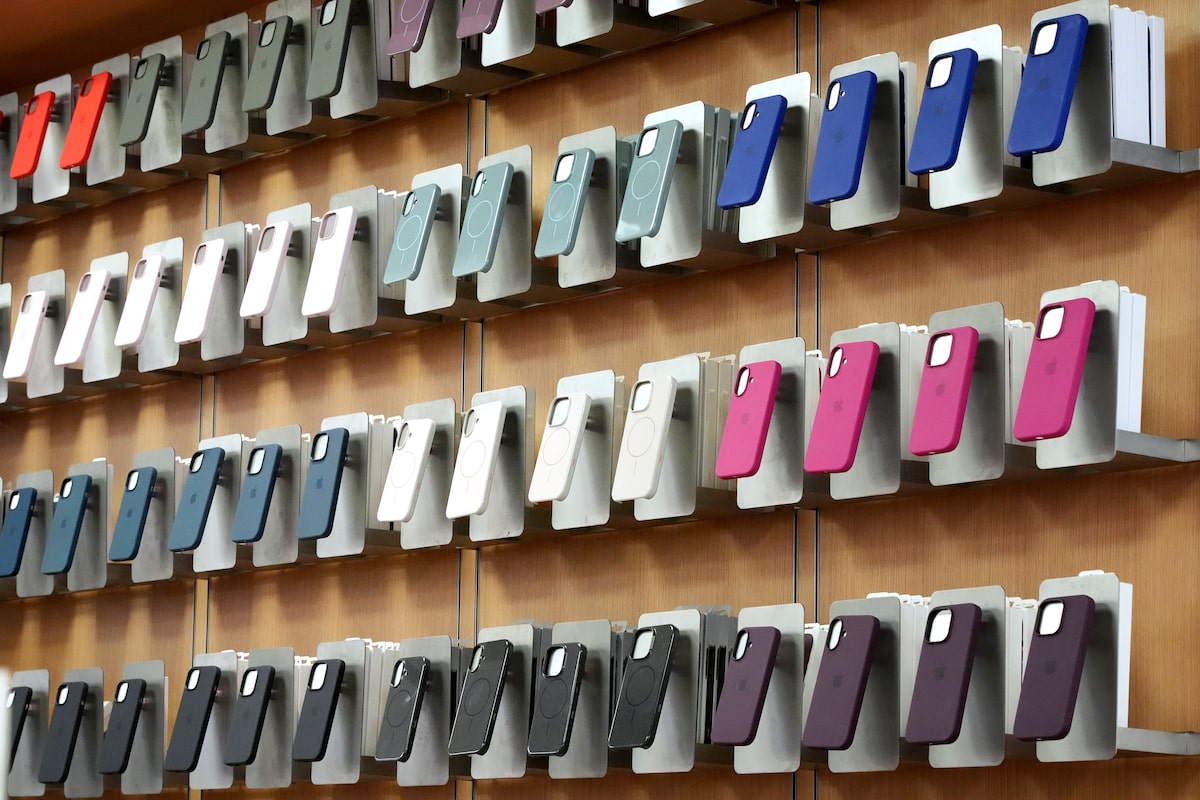
Apple’s billion-dollar tariff dilemma: raise prices or eat the cost of U.S. levies

Almost all of Apple’s manufacturing is done in whole or part by outsourced partners in Asia – the region of the world hit hardest by Mr. Trump’s tariffs.Gene J. Puskar/The Associated Press
Apple Inc. APPL-Q became the world’s most valuable company in part by leveraging global supply chains to make its best-selling consumer technology products. In its most recent annual report, the company also flagged this global reach as one of its biggest risks. Now, tariffs imposed by the administration of U.S. President Donald Trump have indeed turned that strength into a key vulnerability.
On Thursday, shares in the company tumbled 10 per cent, part of a global rout of stocks that spared few companies, particularly in the technology sector.
In recent years, Apple has looked to diversify the countries where its products are manufactured to guard against what it considers its largest risk factors: global and regional economic conditions, and political events. But analysts say the company’s efforts to hedge still leave it vulnerable.
“Our quick math on Trump’s tariff Liberation Day suggests that this could blow up Apple,” said Barton Crockett, analyst at Rosenblatt Securities, in a Thursday note to investors.
“The magnitude of President Trump’s tariffs, specifically to China, is worse than anything we could have imagined,” said Angelo Zino, equity analyst at CFRA Research, in a note.
Most of Apple’s iPhones are still produced in China, but it now makes about a fifth of its phones in India, the majority of its smart watches in Vietnam, and a growing portion of its Mac computers in Malaysia. Substantially all of its manufacturing is done in whole or part by outsourced partners in Asia – the region of the world hit hardest by Mr. Trump’s tariffs.
On Wednesday, he announced new, broad tariffs spanning every country. China will now face 54-per-cent tariffs. India, Malaysia and Vietnam are all on the list, with 27-per-cent, 24-per-cent and 46-per-cent duties, respectively.
For Apple, which generated 36 per cent of sales revenue within the U.S. last year, importing goods manufactured in these countries could cost the company US$39.5-billion a year, and slash its operating profit and annualized earnings per share by a third, Mr. Crockett estimated.
This amounts to a gargantuan catch-22: raise prices for consumers to offset the costs, or absorb those added expenses, seriously eroding margins. Analysts are split on the matter.
Apple would need to raise its prices by at least 30 per cent on average to offset import duties, according to Counterpoint Research co-founder Neil Shah. Mr. Crockett estimated this amount would need to be closer to 40 per cent.
“That would likely depress demand. So, we’re not sure it’s worth it or workable,” he said.
Mr. Zino said Apple would likely handle the higher costs through a combination of making supply chain efficiencies, passing a portion over to consumers and eating up some of those costs. He said the company would have a tough time passing on more than 5 to 10 per cent of the costs to consumers.
“We expect Apple to hold off on any major increases on phones until this fall when its iPhone 17 is set to launch, as it is typically how it handles planned price hikes,” he said.
Meanwhile, Ari Feder, a tax lawyer with Mintz, Levin, Cohn, Ferris, Glovsky and Popeo PC in New York, anticipated Apple and others would pass on the impact of tariffs to consumers. “The short-term impact is concerning,” he said.
Any price hikes could prove difficult at a time when U.S. consumer confidence is plunging. The company could choose to raise prices in other countries to offset the costs to U.S. consumers, which could affect Canadian pricing.
The stock market reacted negatively to this dilemma. Apple’s stock on the NASDAQ was down to its lowest point since June, 2024. (Apple did not respond to a request for comment.)
There may be a third option: Apple has heavily lobbied the U.S. government for exemptions, copying a similar tactic pursued – successfully – during Mr. Trump’s first term in office. But whether or not the President could be persuaded this time is as of yet unclear.
As part of Apple’s efforts to assuage Mr. Trump and lessen its own risk, the company has promised to bring some of its manufacturing home. In February, Apple announced a new Texas-based artificial intelligence factory as part of its plan to invest US$500-billion in the United States over the next four years.
A meaningful shift of production to the U.S., however, would be a generational shift, Mr. Crockett said. “That kind of time horizon is not easily investable.”
A range of software companies also sustained losses over wider concerns about the potentially negative economic impact of Mr. Trump’s trade action.
One of the biggest losers in Canada on Thursday was commerce software giant Shopify Inc. SHOP-T Shares in the country’s most valuable technology company were down 18 per cent on the Toronto Stock Exchange, as investors reacted to news that the U.S. would remove the de minimis exemption that previously allowed low-value items to enter the country tariff-free.
Shopify provides e-commerce services for small businesses and retailers, taking part of those companies’ profits, and those businesses could be hit both by the added duties and by a broad hit to spending, should costs for American consumers increase.
In a post on X on Thursday, Shopify president Harley Finkelstein spoke to the situation.
“Entrepreneurs: I know there’s uncertainty everywhere you look right now. Try to stay focused on what you can control. As Henry Ford said, ‘Obstacles are those frightful things you see when you take your eyes off your goal.’ Keep your eyes on your vision and keep pushing forward,” Mr. Finkelstein wrote.
BMO Capital Markets technology analyst Thanos Moschopoulos said: “Everything is down because everything in the technology space has degrees of macroeconomic sensitivity. The macro-outlook is just dramatically different on the back of the tariff announcements.”